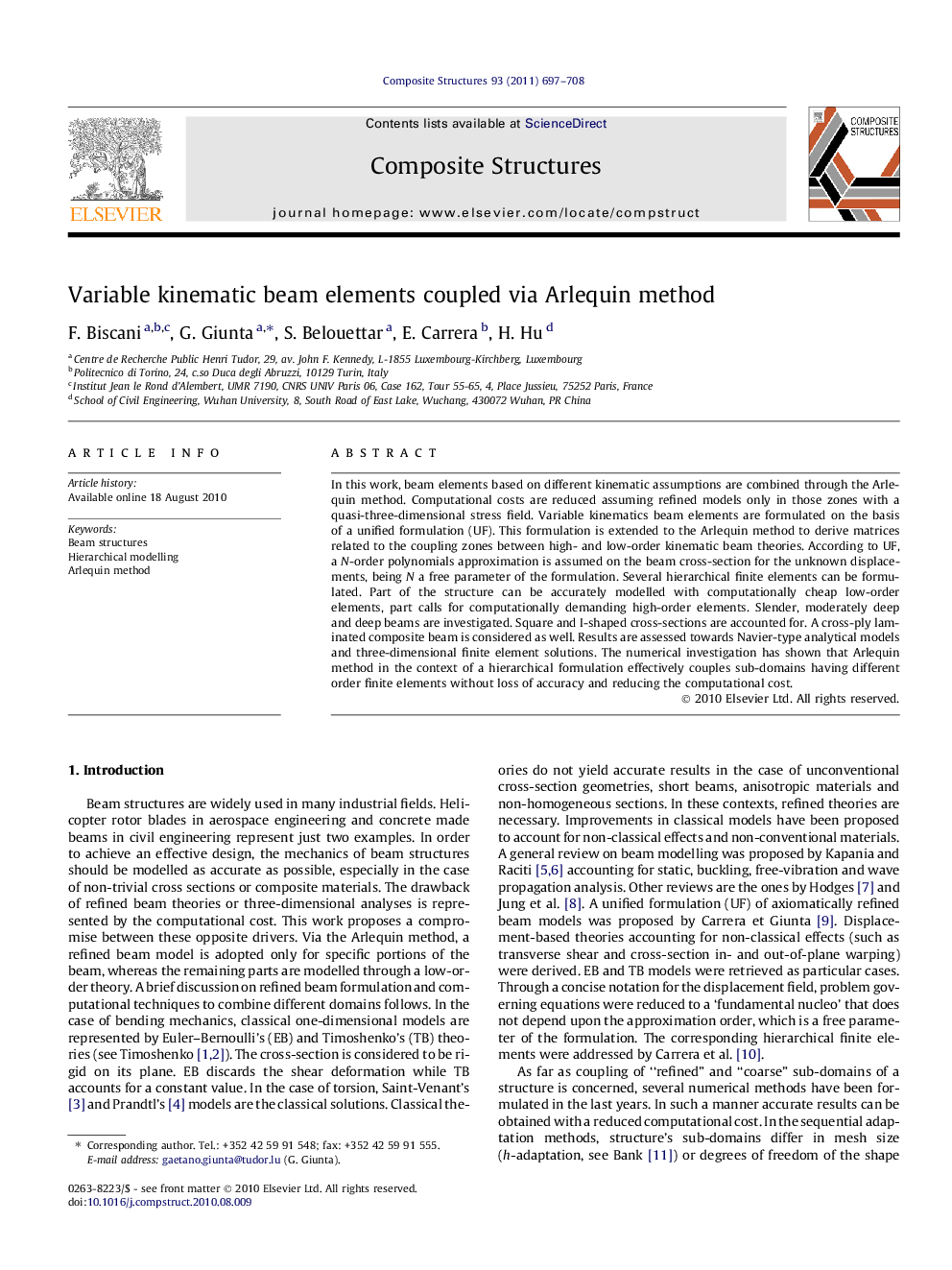| Article ID | Journal | Published Year | Pages | File Type |
|---|---|---|---|---|
| 252820 | Composite Structures | 2011 | 12 Pages |
In this work, beam elements based on different kinematic assumptions are combined through the Arlequin method. Computational costs are reduced assuming refined models only in those zones with a quasi-three-dimensional stress field. Variable kinematics beam elements are formulated on the basis of a unified formulation (UF). This formulation is extended to the Arlequin method to derive matrices related to the coupling zones between high- and low-order kinematic beam theories. According to UF, a N-order polynomials approximation is assumed on the beam cross-section for the unknown displacements, being N a free parameter of the formulation. Several hierarchical finite elements can be formulated. Part of the structure can be accurately modelled with computationally cheap low-order elements, part calls for computationally demanding high-order elements. Slender, moderately deep and deep beams are investigated. Square and I-shaped cross-sections are accounted for. A cross-ply laminated composite beam is considered as well. Results are assessed towards Navier-type analytical models and three-dimensional finite element solutions. The numerical investigation has shown that Arlequin method in the context of a hierarchical formulation effectively couples sub-domains having different order finite elements without loss of accuracy and reducing the computational cost.
